Fission and selective fusion govern mitochondrial segregation and elimination by autophagy
- PMID: 18200046
- PMCID: PMC2234339
- DOI: 10.1038/sj.emboj.7601963
Fission and selective fusion govern mitochondrial segregation and elimination by autophagy
Abstract
Accumulation of depolarized mitochondria within beta-cells has been associated with oxidative damage and development of diabetes. To determine the source and fate of depolarized mitochondria, individual mitochondria were photolabeled and tracked through fusion and fission. Mitochondria were found to go through frequent cycles of fusion and fission in a 'kiss and run' pattern. Fission events often generated uneven daughter units: one daughter exhibited increased membrane potential (delta psi(m)) and a high probability of subsequent fusion, while the other had decreased membrane potential and a reduced probability for a fusion event. Together, this pattern generated a subpopulation of non-fusing mitochondria that were found to have reduced delta psi(m) and decreased levels of the fusion protein OPA1. Inhibition of the fission machinery through DRP1(K38A) or FIS1 RNAi decreased mitochondrial autophagy and resulted in the accumulation of oxidized mitochondrial proteins, reduced respiration and impaired insulin secretion. Pulse chase and arrest of autophagy at the pre-proteolysis stage reveal that before autophagy mitochondria lose delta psi(m) and OPA1, and that overexpression of OPA1 decreases mitochondrial autophagy. Together, these findings suggest that fission followed by selective fusion segregates dysfunctional mitochondria and permits their removal by autophagy.
Figures
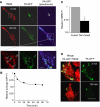

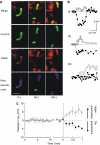
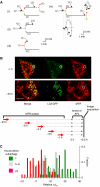
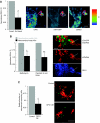

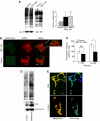
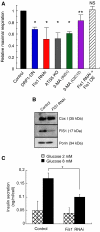

Similar articles
-
A threshold of transmembrane potential is required for mitochondrial dynamic balance mediated by DRP1 and OMA1.Cell Mol Life Sci. 2017 Apr;74(7):1347-1363. doi: 10.1007/s00018-016-2421-9. Epub 2016 Nov 17. Cell Mol Life Sci. 2017. PMID: 27858084 Free PMC article.
-
Impaired balance of mitochondrial fission and fusion in Alzheimer's disease.J Neurosci. 2009 Jul 15;29(28):9090-103. doi: 10.1523/JNEUROSCI.1357-09.2009. J Neurosci. 2009. PMID: 19605646 Free PMC article.
-
Selective actions of mitochondrial fission/fusion genes on metabolism-secretion coupling in insulin-releasing cells.J Biol Chem. 2008 Nov 28;283(48):33347-56. doi: 10.1074/jbc.M806251200. Epub 2008 Oct 2. J Biol Chem. 2008. PMID: 18832378 Free PMC article.
-
Dynamin-related protein 1 and mitochondrial fragmentation in neurodegenerative diseases.Brain Res Rev. 2011 Jun 24;67(1-2):103-18. doi: 10.1016/j.brainresrev.2010.11.004. Epub 2010 Dec 8. Brain Res Rev. 2011. PMID: 21145355 Free PMC article. Review.
-
New insights into the function and regulation of mitochondrial fission.Biochim Biophys Acta. 2013 May;1833(5):1256-68. doi: 10.1016/j.bbamcr.2013.02.002. Epub 2013 Feb 20. Biochim Biophys Acta. 2013. PMID: 23434681 Review.
Cited by
-
Chaperone-mediated autophagy controls the turnover of E3 ubiquitin ligase MARCHF5 and regulates mitochondrial dynamics.Autophagy. 2021 Oct;17(10):2923-2938. doi: 10.1080/15548627.2020.1848128. Epub 2020 Dec 1. Autophagy. 2021. PMID: 33970775 Free PMC article.
-
Implications of mitochondrial dynamics on neurodegeneration and on hypothalamic dysfunction.Front Aging Neurosci. 2015 Jun 10;7:101. doi: 10.3389/fnagi.2015.00101. eCollection 2015. Front Aging Neurosci. 2015. PMID: 26113818 Free PMC article. Review.
-
Functional, structural, and molecular remodelling of the goldfish (Carassius auratus) heart under moderate hypoxia.Fish Physiol Biochem. 2024 Apr;50(2):667-685. doi: 10.1007/s10695-024-01297-7. Epub 2024 Jan 10. Fish Physiol Biochem. 2024. PMID: 38198074 Free PMC article.
-
Morphological control of mitochondrial bioenergetics.Front Biosci (Landmark Ed). 2015 Jan 1;20(2):229-46. doi: 10.2741/4306. Front Biosci (Landmark Ed). 2015. PMID: 25553448 Free PMC article. Review.
-
Dietary salt promotes cognitive impairment through repression of SIRT3/PINK1-mediated mitophagy and fission.Mol Cell Biochem. 2025 Apr;480(4):2345-2360. doi: 10.1007/s11010-024-05069-y. Epub 2024 Jul 13. Mol Cell Biochem. 2025. PMID: 38997506
References
-
- Alavi MV, Bette S, Schimpf S, Schuettauf F, Schraermeyer U, Wehrl HF, Ruttiger L, Beck SC, Tonagel F, Pichler BJ, Knipper M, Peters T, Laufs J, Wissinger B (2007) A splice site mutation in the murine Opa1 gene features pathology of autosomal dominant optic atrophy. Brain 130: 1029–1042 - PubMed
-
- Barsoum MJ, Yuan H, Gerencser AA, Liot G, Kushnareva Y, Graber S, Kovacs I, Lee WD, Waggoner J, Cui J, White AD, Bossy B, Martinou JC, Youle RJ, Lipton SA, Ellisman MH, Perkins GA, Bossy-Wetzel E (2006) Nitric oxide-induced mitochondrial fission is regulated by dynamin-related GTPases in neurons. EMBO J 25: 3900–3911 - PMC - PubMed
-
- Chan DC (2006) Mitochondria: dynamic organelles in disease, aging, and development. Cell 125: 1241–1252 - PubMed
-
- Chen H, Chomyn A, Chan DC (2005) Disruption of fusion results in mitochondrial heterogeneity and dysfunction. J Biol Chem 280: 26185–26192 - PubMed
Publication types
MeSH terms
Substances
Grants and funding
LinkOut - more resources
Full Text Sources
Other Literature Sources
Molecular Biology Databases
Miscellaneous

